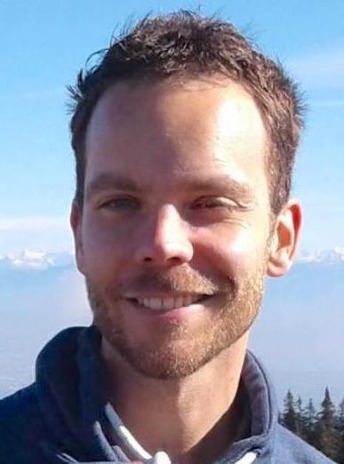Harish Vedantham and Casper van der Kooi nominated for 'Wetenschapstalent 2023'
Harish Vedantham and Casper van der Kooi have been nominated by New
Scientist for Wetenschapstalent 2023 (Science Talent 2023). This election,
organized by the Dutch New Scientist is designed to give young scientists and
their research a stage. A shortlist of 15 candidates has been compiled from
nominations from universities and knowledge institutions. The public can now
cast their vote for their favourite candidate. After the public vote, a jury will
choose a number one, two and three from the five candidates with the most
votes.
Harish Vedantham
ASTRON and Kapteyn Astronomic Institute
'My group is using a new generation of radio telescopes such as the Dutch-led Low Frequency Array (LOFAR) to study the effect of stellar plasma and magnetic fields on the ability of exoplanets to host life. In particular, we are aiming to (a) achieve the first detection of coronal mass ejections (plasma ejections that threaten exoplanet atmosphere) on a star other than the Sun and (b) achieve the first direct detection and measurement of exoplanetary magnetic fields that can act as a shield against stellar plasma ejections.
I enjoy venturing into the unknown. The enormity of the challenge inspires me. I also have an engineering background which makes me really enjoy pushing the
telescopes to their limits in novel ways. I also find mentoring my students into future scientific leaders to be a very rewarding experience.
My group has been busy scouting the landscape and we have made some initial
discoveries. These give me confidence that we will be able to use future observations to study the coronal structure of stars and be able to pinpoint events that can damage exoplanet atmospheres. At the same time we have achieved detections of the coldest brown dwarfs (more massive cousins of exoplanets). These act as a springboard to go for our ultimate aim--- to achieve a detection of radio waves from exoplanets and study how their magnetic fields protect their atmospheres.'

Casper van der Kooi
Groningen Institute for Evolutionary Life Sciences
'In my research I study to understand how flowers and animals get their colours. I want to understand the mechanistic underpinnings of the beautiful flora and
fauna around us, as well as how these colours evolve in the eyes of natural observers, such as pollinators or mates. I study this evolutionary question using techniques from biology (evolutionary theory, behavioural experiments) and
physics (optics, anatomy).
A new research project focuses on how shiny visual effects determine visibility to
insects. In nature, most colours are matte, yet across the tree of life, many
species have evolved optical structures that create a bright flash when observed
under a specific angle. How does shininess contribute to visibility? In our group
we study the optical and anatomical properties of glossy flowers and flashy
butterfly wings. Together with colleagues Sydney and Japan we study how
flashiness of butterfly wings determines visibility to potential partners, and how
butterfly eyes and brains process flashy visual effects.
I strive to make the world — and especially The Netherlands —a more biodiverse
place, and colour is a beautiful way to visualise biodiversity. I use our scientific
knowledge on ecology and evolution to advice policy makers and politicians, in
the media, and write opinion pieces for newspapers. With my brother (an artist) I
am currently working on a children’s book about plant evolution. This book is
scheduled to appear mid 2024 with Lemniscaat Publishers.'
The YAG made the video below, about Casper and his research:
More news
-
19 December 2025
Mariano Méndez receives Argentine RAÍCES award
-
18 December 2025
Why innovate, and for whom?
-
17 December 2025
Ben Feringa wins Feynman Prize
